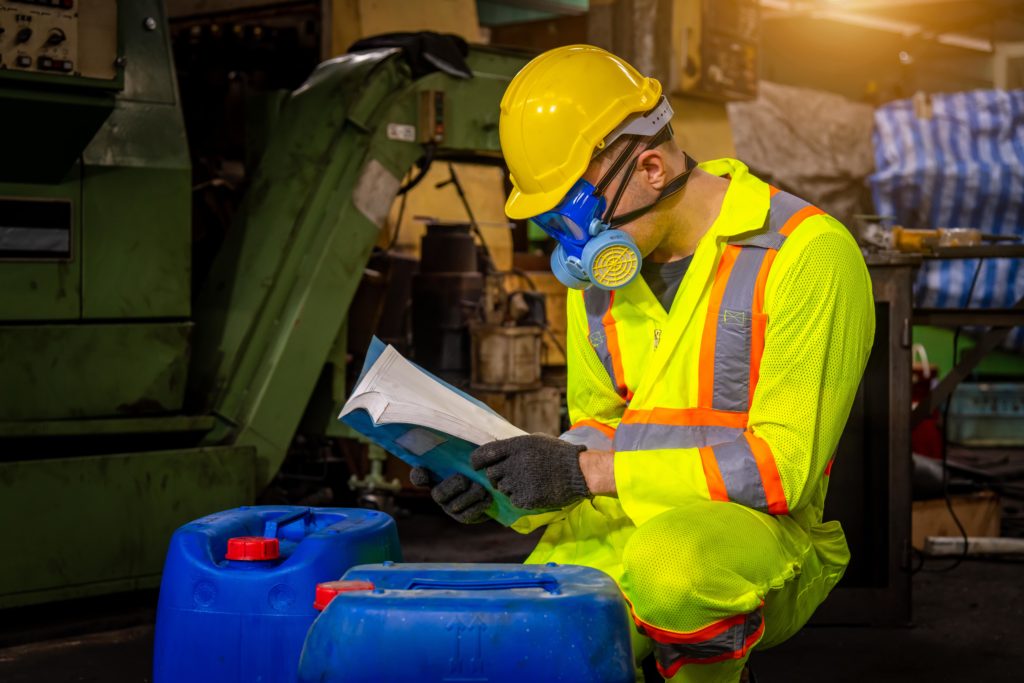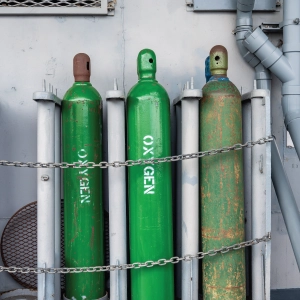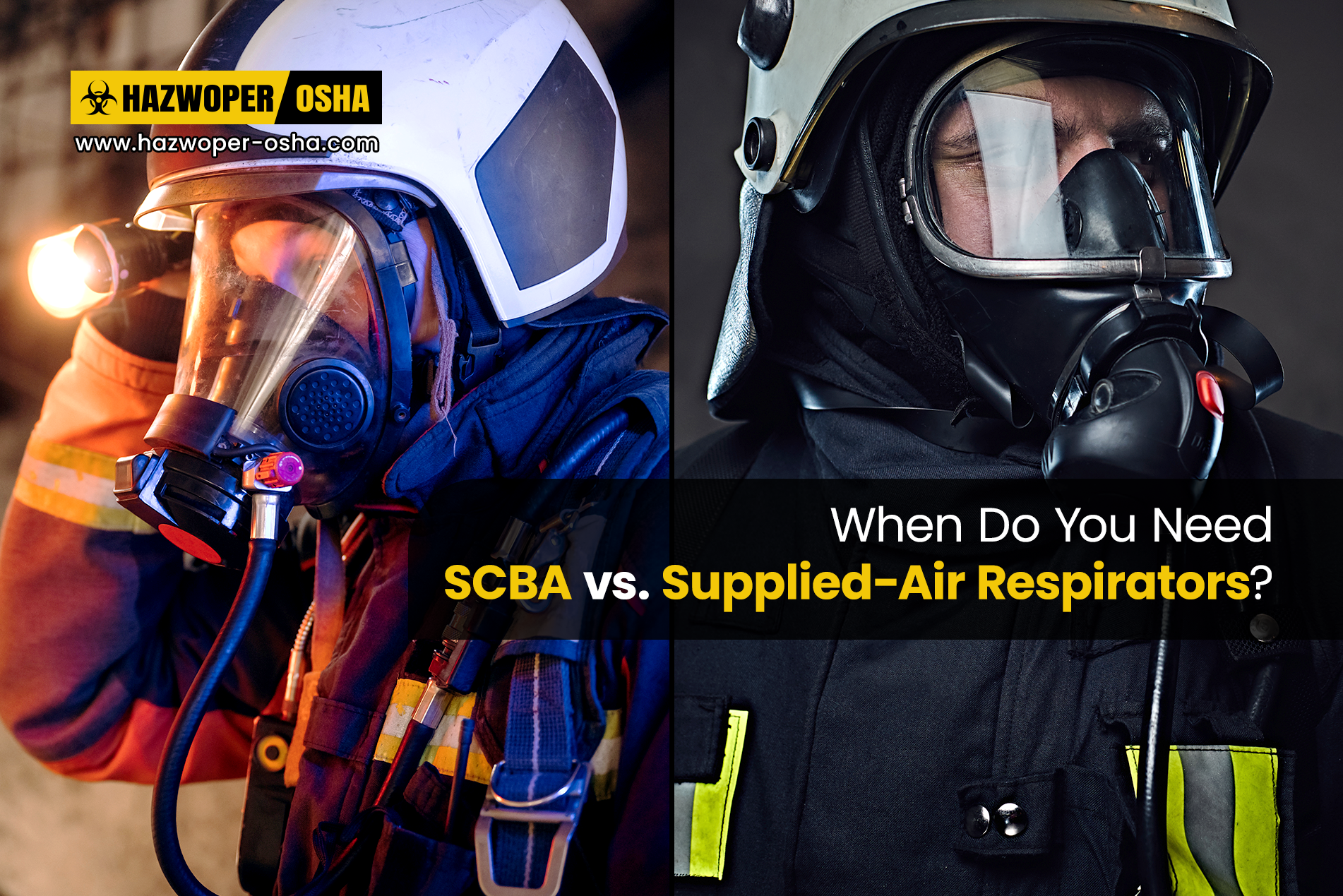What is GHS and what is its Connection with OSHA’s Hazard
Communication Standard?

Everyone working in risky occupations and with hazardous chemicals should be familiar with OSHA’s Hazard Communication Standard, or at the least, the parts that apply to their work responsibilities. Now, we also have GHS in the mix. So, what is GHS and why do so many training programs emphasize Hazard Communication with GHS? More importantly, what is OSHA’s connection to GHS?
GHS Explained
GHS stands for the ‘Globally Harmonized System of the Classification and Labelling of Chemicals’. GHS was developed by the United Nations to standardize the way in which chemicals are labeled and recognized across different countries so that there would be uniformity in the identification and understanding of the dangers associated with toxic chemicals that are exported and imported to and from different countries. In effect, the GHS acts as a standardized guideline for labeling and classifying chemicals from manufacture through to transportation, distribution, and handling of these chemicals when used in various industries and the production of goods.
The GHS will help to;
- Define the health, physical, and environmental hazards of chemicals;
- Create a classification process for chemicals by using available data for comparing with the defined hazard criteria; and
- Direct the communication of the hazard information and related protective measures by
- using appropriate labeling criteria and by developing Safety Data Sheets (SDSs); and
- providing established symbols and language that can be used for each hazard class and hazard category.
The GHS is often referred to as the ‘The Purple Book’ (likely, because of its color) and can be used by countries to develop or modify existing chemical hazard classifications. While it is not standard or law, the GHS is a helpful tool, giving comprehensive guidance to chemical manufacturers and suppliers to ascertain and determine the hazard levels of their products and use a regimented framework for the preparation of labels and SDSs.
OSHA’s Hazard Communication Standard
OSHA’s Hazard Communication Standard, abbreviated as HCS, was developed to ensure all chemicals produced or imported into the United States are classified and the pertinent information regarding chemicals and related chemical hazards are shared with employers and employees. This means that chemical manufacturers, importers, and distributors are obligated to share information on the dangers of these toxic chemicals and their compositions with people using these chemicals. Similarly, employers are also expected to provide data, and train employees on the different dangers of chemicals being used in the workplace. Relevant and complete chemical information must be transferred from the point of chemical manufacture and downstream to the chemical user and the employee.
The HCS applies across industries and occupations in which workers use or are exposed to hazardous chemicals, including the construction industry, shipyards, marine terminals, longshoring, and other general industries.
GHS and HCS
Now that we have grasped the difference between GHS and HCS, let us understand the interlinked relationship between the GHS guidelines and OSHA’s revised HCS.
When the United States officially adopted the GHS in 2012, OSHA also adopted the GHS framework to further safeguard the health and safety of employees working with and handling chemicals as part of their job tasks. In order to align the HCS with the GHS, OSHA revised its Hazard Communication Standard, known as ‘HazCom 2012’.
By taking this proactive step, OSHA has not only increased protection efforts towards workers from chemical exposure but helped reduce the confusion of having the same chemical marked with different hazard levels or other contradictory requirements. Furthermore, by aligning with the GHS, OSHA has also accommodated greater ease for the import and export of chemicals between other countries and the United States. This is because there is now a cohesive approach to communicating hazard information on labels and safety data sheets across borders. Besides, by doing this, OSHA has also encouraged employers to improve their hazard communication programs and ensure employees now comprehend chemical hazards and relevant protective measures.
Some Key Changes of the HCS 2012
Since the revision, the focus of the HSC is to empower employees by giving them the ‘right to understand’ the risks of working with hazardous chemicals. Thus, the main changes of the HCS are concentrated in these five areas that have been modified to accommodate the GHS guidelines and systems for chemical classification.
- Hazard Classification – must now follow specific criteria for the classification of health and physical hazards;
- Labels – aligned to GHS guidelines that have six standardized elements that include a harmonized signal word, pictogram, and hazard statement for each hazard class and category, as well as the necessity to provide precautionary statements;
- Safety Data Sheets (SDSs) – aligned to GHS where the information must be strictly laid-out and adhere to the specified 16-section format of the SDS;
- Training for Employees – must now include comprehensive understanding and recognition of the new labeling format and safety data sheets structure, and
- The need for a Written Hazard Communication Program.
Resultantly, the HCS now facilitates a cohesive hazard communication process by requiring both Labels and SDSs of chemicals to follow a standardized format and by developing consistent criteria to be applied to chemical classifications based on their physical and health hazards.
Learn More about GHS and HCS
This article gives a brief overview of the interconnectedness of OSHA’s Hazard Communication Standard with the GHS. To learn more, especially, the details of how to classify chemicals and hazards, what rules to follow, and how to read and understand chemical labels and Safety Data Sheet information, enroll in our OSHA Hazard Communication with GHS training program, and be more conversant and confident to handle chemical hazards and exposures in the workplace.

 EN |
EN |  ES
ES






























































































































